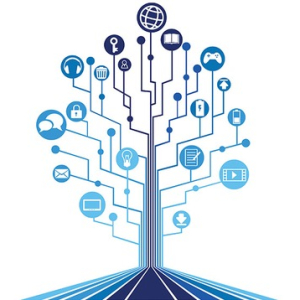IoT technology for Safer Sites-Workerless Sites and Remote Locations
Managing workerless sites and remote locations presents unique challenges for businesses in a variety of industries, from energy to water and beyond. In these situations, technology can be an invaluable tool for improving efficiency, reducing costs, and enhancing safety.
One key development that can be particularly useful in this context is the move to Internet of Things (IoT) based technologies. IoT devices can be used to remotely monitor equipment, optimise energy consumption, improve safety conditions, and reduce maintenance costs at remote sites.
In this article, we will explore how IoT can be used to manage remote worker-less sites and locations, as well as the key connectivity requirements that must be considered to ensure success.
How IoT Can Be Used on Workerless Sites or in Remote Locations
By leveraging IoT technology, utilities can remotely monitor equipment and assets, optimise energy consumption, prevent equipment failures, reduce maintenance costs, and ensure the safe and reliable delivery of their utility to their customers.
With the right technology and connectivity solutions in place, utility companies can achieve these goals and improve their overall business outcomes. Here are some ways technology and IoT can be used:

Remote Montioring
By deploying IoT sensors, utilities can remotely monitor equipment and assets, including transformers, circuit breakers, and power lines, collecting data on various parameters like temperature, pressure, voltage, current, and other performance metrics.
The data gathered by these sensors and transmitted to a central database, can provide utilities with insights into the condition and performance of their equipment, enabling them to identify potential issues before they become major problems.
For example, if a transformer operates at a higher temperature than usual, the IoT sensors can detect it and alert the utility to investigate the issue. This early warning system can help utilities prevent equipment failures, avoid downtime, and reduce maintenance costs.
Remote monitoring also allows utilities to collect data over an extended period, enabling them to track their equipment’s performance over time. By analysing this data, utilities can identify trends and patterns, helping them make better decisions about when to replace or repair equipment.
Furthermore, remote monitoring can be particularly beneficial for managing assets located in remote or difficult-to-access locations. IoT sensors can be installed in areas that are not easily accessible, and the data can be transmitted wirelessly, eliminating the need for manual data collection.
Predictive Maintenance
By analysing the data collected from IoT sensors, utility companies can use predictive maintenance algorithms to determine when maintenance is needed on equipment, instead of relying on scheduled maintenance which works on generalised timelines which are no reflection of the actual condition of the equipment. uses real-time data equipment’s current condition determine maintenance is needed.
By adopting predictive maintenance, utilities can reduce maintenance costs and prevent unexpected downtime from equipment failures, which can be costly and disruptive to operations.
Predictive maintenance algorithms can use various data points from IoT sensors to identify when maintenance is needed. For example, they may monitor vibration levels, temperature fluctuations, or other performance metrics that can indicate when a component is about to fail.

This data is then used to generate alerts, which can be sent to maintenance teams, enabling them to proactively address issues before they lead to equipment failure. Additionally, the data can be used to optimise maintenance schedules, ensuring that equipment is serviced at the right time, which can reduce maintenance costs.
Predictive maintenance using IoT sensors is an effective way for utilities companies to maintain their equipment and avoid unexpected downtime, saving money and increasing efficiency.
Automation
Automation involves using IoT sensors and automation software to remotely control and operate equipment at remote sites.
By deploying IoT devices at remote sites, utility companies can collect data on equipment performance, which can then be analysed to optimise operations. This data can be used to remotely control equipment, such as switchgear, breakers, and transformers, from a central location, eliminating the need for on-site workers. Automating the operation of remote equipment can lead to several benefits. For example, it can improve efficiency by allowing utilities to remotely monitor equipment and detect issues before they become major problems. This can help prevent costly equipment failures and downtime, reducing maintenance costs.
Furthermore, automation can also reduce the need for on-site workers, which can be beneficial for managing remote or difficult-to-access sites. Instead of sending workers to the site, utility companies can remotely control and monitor equipment from a central location, reducing travel time and associated costs. In addition, automation can help reduce the risk of accidents by eliminating the need for workers to be physically present at remote sites.

Safety
IoT sensors can be used to detect various safety hazards such as gas leaks, fire hazards, or other unsafe conditions at remote sites. These sensors can be linked to automation tools that can in turn send alerts to maintenance crews or emergency responders.
For example, if an IoT sensor detects a gas leak, it can send an alert to the maintenance crew, allowing them to take action before the situation becomes hazardous. This early warning system can help utilities prevent accidents and improve safety conditions at remote sites.
In addition, IoT sensors can be used to monitor the condition of equipment and identify potential safety risks. For example, if an IoT sensor detects an abnormal temperature increase in a transformer, it can alert the maintenance crew to investigate the issue before it leads to equipment failure or other safety risks.
Energy & Efficiency
IoT sensors can be used to monitor energy usage at remote sites, providing real-time data on energy usage, and enabling utility companies to optimise energy consumption and reduce costs.
By monitoring energy usage at remote sites, utilities can identify areas where energy consumption can be reduced. This information can be used to optimise operations and reduce energy waste, resulting in significant cost savings.
For example, if an IoT sensor detects that a particular piece of equipment is consuming more energy than necessary, the utility can investigate the issue and take appropriate measures to reduce energy consumption. This may involve replacing or repairing equipment, changing operational procedures, or introducing energy-saving measures such as insulation or lighting controls.
IoT sensors can also be used to monitor energy usage over time, enabling utilities to track their energy consumption patterns and identify trends. This information can be used to make informed decisions about energy usage and plan for future energy needs. Additionally, they can be used to monitor renewable energy sources such as solar panels or wind turbines. By collecting data on energy production, utility companies can optimise the use of renewable energy sources, reducing their reliance on fossil fuels and promoting sustainability.
Making the Connection...
The connectivity requirements for devices and sensors in remote or workerless sites are an essential consideration when deploying IoT solutions. Some key considerations for these requirements include bandwidth, robustness, resilience, and security.
Technology
Low-power wide-area networks (LPWANs), satellite communication, and cellular networks are among the technologies that are well-suited to remote or workerless sites. It is crucial to consider factors such as network coverage, latency, and security when selecting a communication technology to ensure that it can operate effectively in a remote location.
Bandwidth
While IoT applications do not typically require large amounts of data to be transmitted, it is still essential to ensure that sufficient bandwidth is available to transmit the data effectively.
Resilience
To achieve resilience in IoT solutions, data may be stored locally on the device until connectivity is restored, and then forwarded to the central server. This approach ensures that data is readily available for analysis once the connectivity is re-established. The IoT system should have built-in redundancy and failover mechanisms that guarantee data are always available, even in the event of a device or network failure.
Security
Data security is another important aspect of service, IoT solutions should be designed to ensure that data is secure, even when stored locally on devices. This means implementing appropriate security protocols, such as encryption and authentication, to prevent unauthorized access to the data.
Moreover, regular testing of the IoT system can help identify potential issues and ensure that the system is functioning correctly, while regular maintenance can ensure that the system remains up-to-date and secure.
Robustness
It is therefore essential to ensure that the IoT system can operate effectively in challenging environments and that it can withstand and recover from unexpected interruptions or network outages. One solution to ensure robustness in remote areas is to use failover or multi path technology.
Failover technology enables devices to automatically switch to a backup network if the primary network fails or experiences connectivity issues. Multi-path technology, on the other hand, enables IoT devices to switch between different modes or paths to ensure that they are always connected, this may just be multi-SIM but could also involve a mix of technologies.
How Onwave Can Help
Onwave is the perfect partner for any utility company looking to connect remote or workerless sites and leverage the power of IoT technology. With our expertise in connectivity solutions and IoT applications, we can help utilities monitor equipment, optimise energy consumption, improve safety, and reduce costs.
We understand the unique challenges of working in remote or challenging environments and have the expertise to design and implement custom solutions that meet your specific needs. Whether you need to remotely monitor equipment, optimise energy usage, or ensure safety, Onwave has the solutions and experience you need to succeed.
Don’t hesitate to get in touch with us today to learn more about how Onwave can help you connect your remote or workerless sites and leverage the power of IoT technology. Our team of experts is always ready to answer any questions you may have and provide you with a customised solution that meets your unique needs. Contact us today to learn more about our services and how we can help you improve efficiency, reduce costs, and enhance safety.







